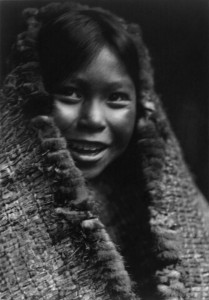Chapter 12. Children and Childhood
12.1 Introduction

Histories of childhood present special challenges. First, assuming that one is fortunate enough to pass through childhood and not succumb to the many dangerous diseases, it is a transitional phase in life. However much it might define one, it will only do so for a certain period of time and then it is left behind. One may be a female or an Indigenous person or a farmer for the entirety of one’s life, but no one is a child for more than the first few years.
The second challenge is how to define childhood. Clearly there’s the period of utter dependency that most societies would agree constitute infancy and that usually lasts four to six years. After that, what distinctions does a society and culture make between a seven-year-old, for example, and a 14-year-old? What criteria are used to define the qualities of childhood and its end? Across the many cultures of British North America and Indigenous Canada and across many centuries, the definition of childhood has been both diverse and fluid.
Third, the history of childhood is limited by the lack of personal records. Most children in the past were insufficiently literate and rarely self-reflective enough to provide first-hand accounts of their lives. This changed somewhat in the 19th century when institutionalized education emerges as a shared aspect of child development, one that taught children how to give voice to their experiences. Nevertheless, the record in past centuries is patchy at best. And our own values and prejudices about childhood come to bear. As historian Robert McIntosh recently wrote,
The history of childhood has been reconstructed through studies of adults and their activities – and children’s responses to these. Only rarely is the agency of children recognized in the historical literature: children tend to be portrayed as passive beings who are the objects of welfare and educational strategies. The history of childhood becomes the history of the efforts of others on children’s behalf. [1]
What becomes clear in a study of childhood over even a relatively brief stretch of historical time is how the experience is historically contextualized. Childhood, probably more than adulthood, reveals the extent to which we are shaped less by biology and family and more by historical forces. Nature and nurture are important but it is history’s hand that rocks the cradle.
Learning Objectives
- Describe what defined childhood in the past.
- Identify possible sources of information on historical experiences of childhood.
- Demonstrate awareness of different historic experiences in New France and British North America.
- Describe the role of education and schooling in the lives of children.
- Explain the relationship between childhood and work in different economic and social contexts.
Attributions
Figure 12.1
Clayoquot girl by BotMultichillT is in the public domain.
- Robert McIntosh, “Constructing the Child: New Approaches to the History of Childhood in Canada,” Acadiensis XXVIII, no.2 (Spring 1999). ↵

